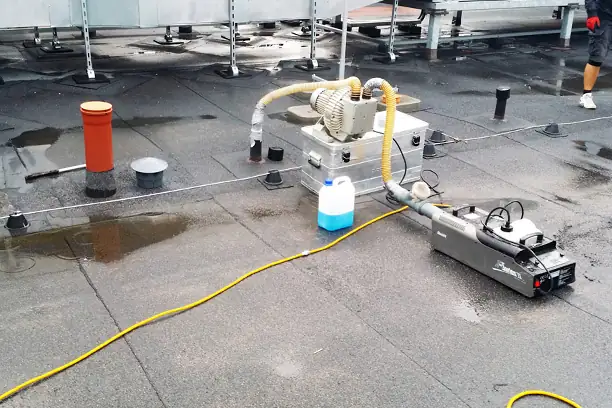
Roof leak detection is a crucial process aimed at ensuring the protection of a building from water infiltration caused by structural damage to the roofing. Several methods and techniques are used to detect leaks:
Visual Inspection: involves thoroughly examining the roof for signs of damage, cracks, gaps, or discontinuities in the roofing materials and checking areas where water may be causing leaks.
Non-Invasive Roof Leak Detection Methods:
- Electric potential difference method effectively identifies roof leaks, even on green or inverted roofs,
- Dry test method using a portable power generator (spark tester), invaluable for large roof made of PVC and TPO/FPO plastic membranes.
- Wet test (vector mapping) using an electronic scanner to detect increased moisture within the roof layers, allowing for the identification of damage or leaks by scanning from the roof surface.
- Thermal imaging method: Utilizes a thermal imaging camera to detect temperature differences on the roof surface, which can indicate areas where water is penetrating the structure.
Detailed Localized Examinations:
- Vacuum method: Recommended for quickly checking small areas and membrane joints (seams) on flat roof surfaces.
- Smoke testing using a high-capacity generator – this method helps locate leaks and discontinuities in waterproofing, especially around flashings and vertical upturns.
- Test cuts – involves selective cuts in the roof at specific points to inspect the actual condition of the roof layers and identify the causes of issues.
Additional Structural Layer Examination: This involves assessing the condition of the roof's structural and insulation layers, such as thermal insulation and roofing materials, to ensure they meet the declared physicochemical parameters, are properly secured, and are not prone to damage, thus fulfilling their intended function.
We collaborate with a team of independent experts and provide technical reports and expert assessments
